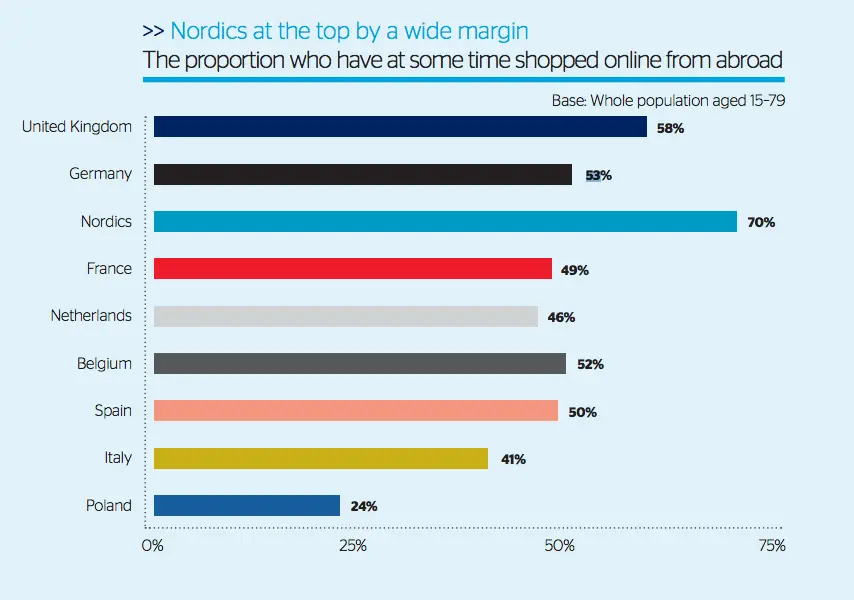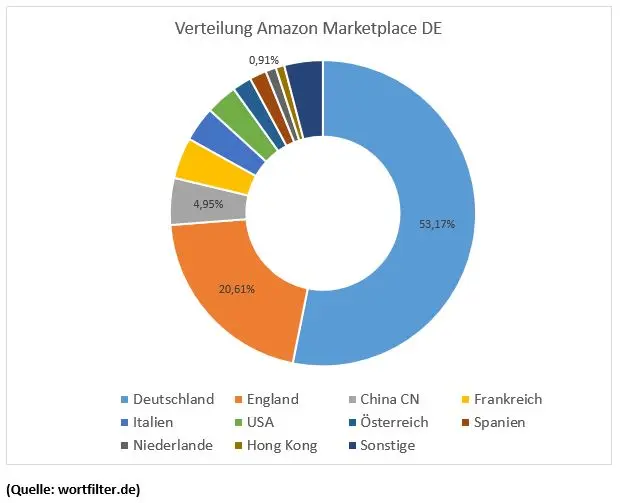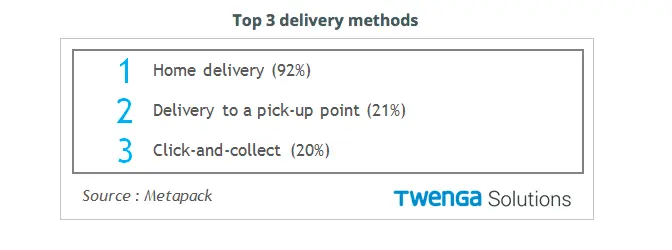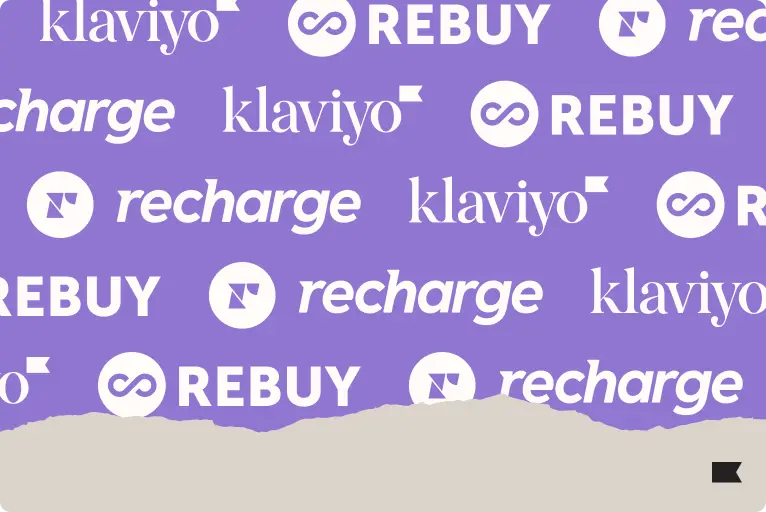The case for selling on Amazon Germany in 2017
So, you made the decision long ago that selling on Amazon was right for your business.
Turns out it was really right for your business, and now you’re thinking about ways to grow.
Of course you’re looking into what else you can do to sell more to the US market – Amazon’s biggest. But you gotta be wondering, “am I restricting myself by focusing solely on the US Amazon market?”
Probably.
While Amazon’s US market is the largest, it also has millions of third-party sellers. That’s a lot of competition. And what are you supposed to do if you want to be as successful as Peter Thiel? That’s right, you guessed it. Escape competition.
And where should you go to escape competition? You should go to Germany, obviously.
Wait, hear me out.
If you’re an Amazon seller and you’re interested in growing your business, you should take a long, hard look at making your products available on Amazon.de this year.
Here’s why:
- Germany is Amazon’s second largest market behind the US – at almost $14B it accounts for 10.4 percent of the company’s total revenue
- That market is growing – the German market grew almost 20 percent in 2016
- As of last month, there were but 49,946 active sellers on Amazon.de
- A year ago, only half of those sellers were German. The market is accustomed to buying from sellers abroad.
- Amazon FBA offers three options in Europe: Pan-European FBA, European Fulfillment Network (EFN), and Multi-Country Inventory
Need more convincing? Let’s take a closer look.
Assessing the marketplace
First, let’s take a quick look at the state of German ecommerce.

- The market was worth 59.7 billion euros in 2015 and is expected to reach 66.9 billion euros in 2016
- It’s expected to grow 12 percent yearly through 2017, faster than any other Western European country
- It’s expected ecommerce revenue will account for 53% of the total gross domestic product in Germany by 2017.
- The estimated share of online retail in Germany in total retail is 6,6% at the moment
But what about cross-border commerce trends and popular delivery methods? Are Germans willing to buy products from foreign sellers? Do they have the same expectations about delivery, more or less? I’m glad you asked.
Cross-border trade
53% of German Internet users bought a product from a foreign country in 2015, which is actually quite high when compared with other European countries (except the Nordics, who don’t give buying a product from a foreign country a second thought).

When purchasing abroad, German consumers are more likely to buy a product from the UK, the United States, or China.
What’s more, Amazon Germany is rife with foreign sellers.

Slightly more than half of active traders on Amazon’s German marketplace actually come from Germany. In absolute figures, it concerns about 27,000 German retailers. For comparison: on eBay Germany, there are about 122,000 German suppliers active. One in five retailers who sell via Amazon come from the United Kingdom and more than 9 percent comes from Asia.
This is shown by the German website Wortfilter, which did some research on Amazon in Germany. It found out there are a total of 135,000 registered retailers who trade on the German marketplace, but only 55,310 are currently active. And of these active sellers, only 53 percent come from the country where the marketplace is situated. So, that means almost half of Amazon Germany’s third-party retailers are foreign traders.
You may notice that Wortfilter and Marketplacepulse came up with different numbers for active third-party sellers on Amazon.de. The difference is small, and not enough to change the case overall.
Popular delivery methods

To put it another way:
Germany is also one of the leading European markets for cross-border trade, and their already established delivery infrastructure is another huge benefit to retailers looking to reach the country’s 58 million online shoppers.
Assessing the Amazon.de marketplace
Germany is Amazon’s second largest market (and it’s growing).

Amazon generated revenues worth 14.1 billion dollars, or 12.8 billion euros, in Germany in 2016. The German website now accounts for 10.4 percent of the company’s total revenue and is – again – the biggest market outside of the United States.
Amazon generated revenues worth 14.1 billion dollars, or 12.8 billion euros, in Germany in 2016. The German website now accounts for 10.4 percent of the company’s total revenue and is – again – the biggest market outside of the United States.
Amazon shared its annual report [pdf], which shows the online revenue generated per market in 2016. Whereas the whole company saw its revenue increase by 27 percent to reach 136 billion dollars last year, the German market grew almost 20 percent. Source.
If ecommerce in Germany is strong, Amazon.de is strong and trending up, and Germany has all the right infrastructure and expectations in place, it kind of feels worth checking out, no?
Have questions about logistics? No problem.
You want to know how you’re going to sort out logistics – how are you going to distribute your products to Europe?
It’s actually pretty easy.
Once you ship your products to Europe, Amazon offers three types of fulfillment options: Pan-European FBA, European Fulfillment Network (EFN), and Multi-Country Inventory.
The main differences have to do with how many countries you want your products to be made available and, of course, how much VAT you’re going to pay.
Generally speaking, and especially since we’re just looking at Amazon.de, it’s smart to start small and focus on one market. Could you make your product available everywhere in Europe all at once? Well, yeah. But only you know whether or not your business can handle the increased work to do it right. And even if you do can handle the work, given the size of the other European markets and corresponding consumer behavior, is it really worth it?
Something to consider when making a decision on Pan European FBA — there is but one checkbox “in your Seller Central account…between you and a seven-country VAT registration obligation with 64 VAT returns per year and other VAT reporting requirements.”
That headache likely doesn’t need explaining.
What else do you need to you know?
VAT
Since we’re on the topic of VAT, you should know that you’re responsible for paying it. That’s the short answer. The long answer is…predictably long and complex. I’d recommend giving this article a quick read to understand the basics, but in general, factor Germany’s VAT into your business. Don’t be tempted to make your product available across Europe unless you’re willing to do the translation/copywriting legwork AND pay the VAT in each country.
Translation, copywriting, customer service
What kind of translation and copywriting legwork am I talking about, you ask? For starters, you can’t just throw your products up on Amazon.de in English and expect anyone to take you seriously. And you definitely shouldn’t run your product descriptions through Google translate and hope for the best.
Some people choose to simply pay a German translator to do a literal translation and, while it might be technically accurate, the result is unlikely to properly capture the tone you set for your brand.
So what are your options?
There are agencies out there that specialize in bringing your Amazon business to Germany.
Keep in mind that if you want to present yourself on Amazon.de the same way you do on Amazon.com, your product descriptions don’t simply require translation. They require translation and copywriting expertise. Don’t know how to write compelling copy in German? Don’t know what keywords Germans use to search for your product? Don’t go it alone.
German shoppers won’t buy from someone who doesn’t have a strong grasp of the language. Just like in the US, it looks unprofessional and doesn’t inspire a great deal of trust.
Customer service, on the other hand, can be simply translated. There are anecdotal stories of how you should expect more returned items than you might get from Americans, and perhaps your email exchanges with your German customers will lean towards curt, but if you go in expecting these types of things it doesn’t sound like a dealbreaker to me.
On to Germany
It’s true, Amazon.de is not the biggest market out there. Nobody is saying that it should be the core focus of your business.
But if you are looking to grow your business abroad, and maybe learn a thing or two about the European markets, you could definitely do worse than selling on Amazon.de.
You might also use it a springboard to bring your products other European countries – lots of third-party sellers who sell in Germany are doing just that.

Related content

Discover the best marketing automation platform for 2026 and learn how to choose based on data, integrations, scalability, and the features that drive real customer value.

Discover 4 proven ways to reduce cart abandonment and recover lost sales. Learn how to build trust, streamline check-out, and personalize abandoned cart flows to convert more shoppers.

Looking for the best Shopify apps for marketing and customer service? Klaviyo, Rebuy, and Recharge together create a high-performing tech stack that revenue and customer retention.